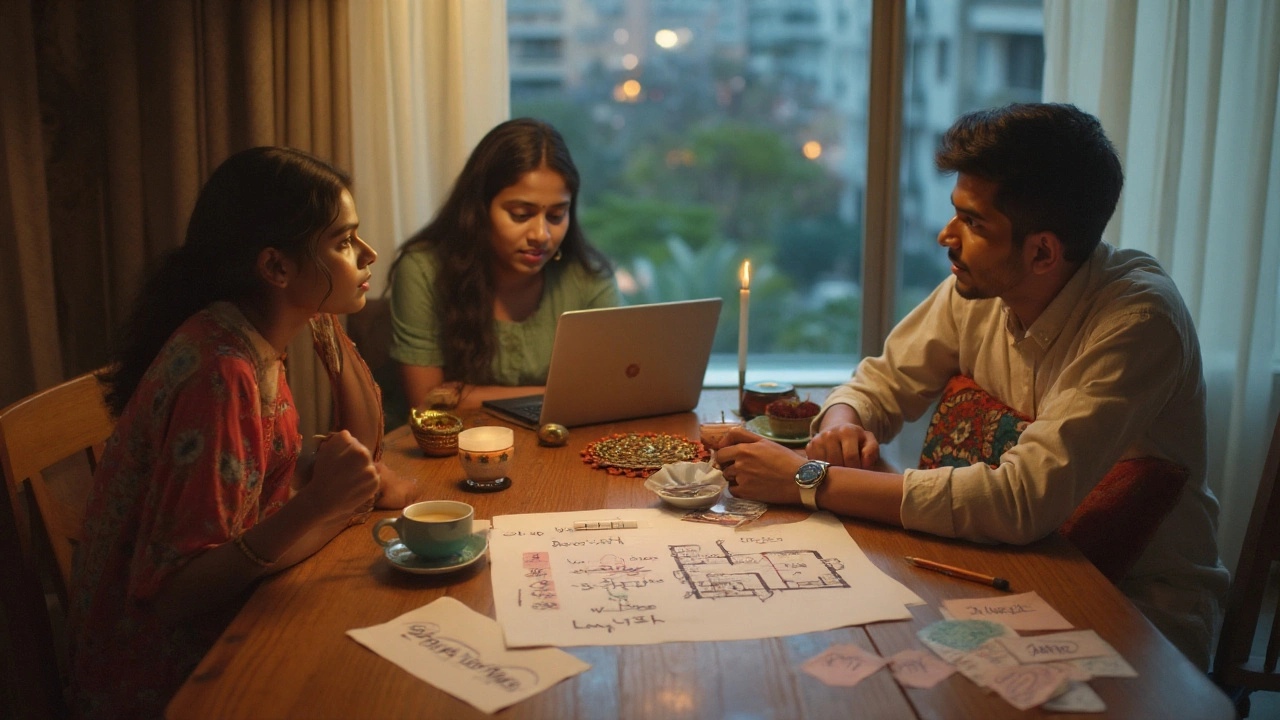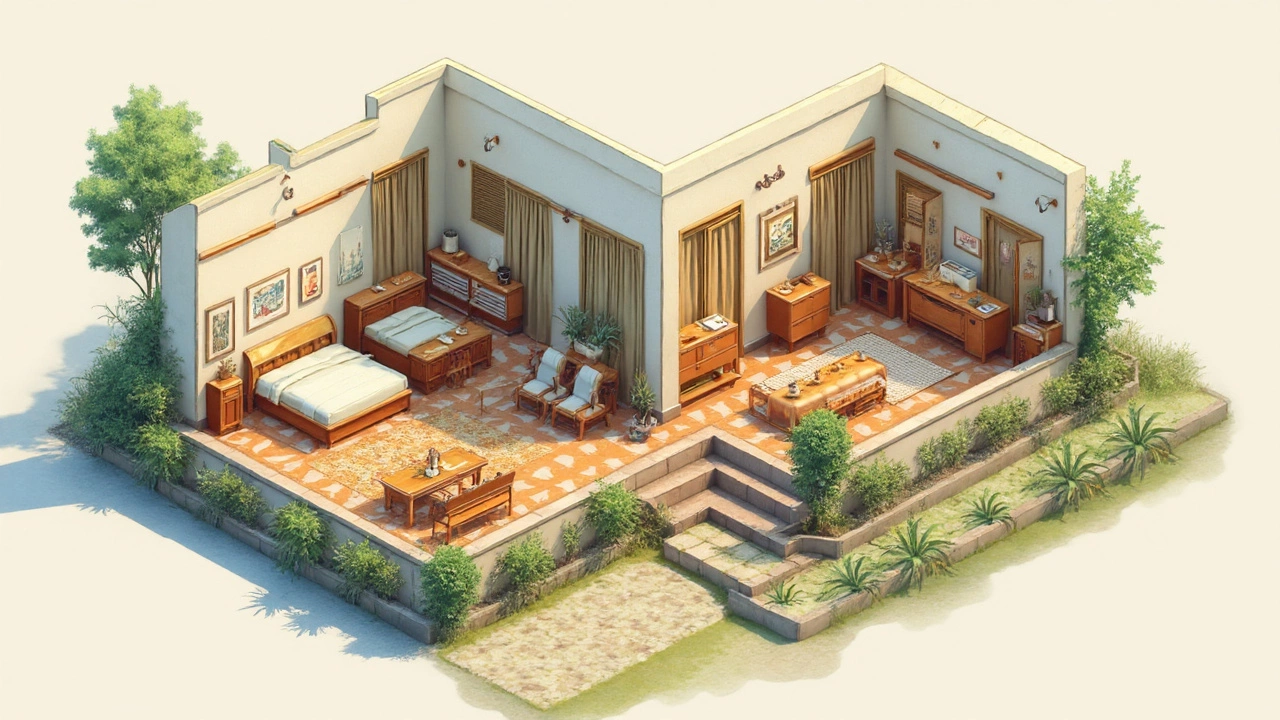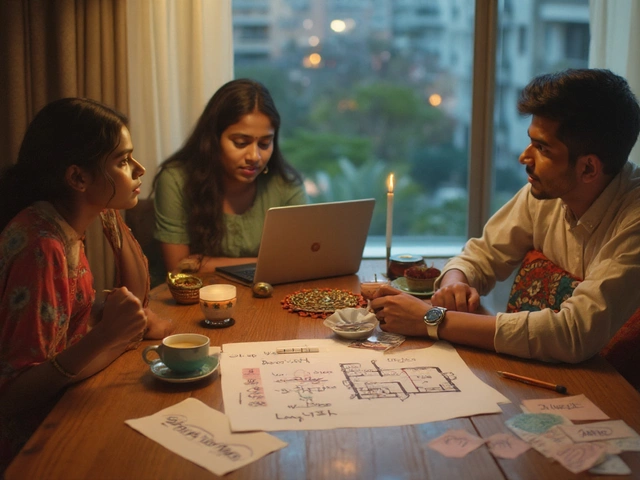What Is a 3I Flat? Singapore HDB 3‑Room “Improved” Explained: Layout, Size, Pros & Cons

You keep seeing 3I in Singapore property listings and wonder if it’s a typo, a floor, or some insider code you missed. It’s none of those. It’s a specific HDB flat type with its own quirks, sizes, and trade‑offs. Expect a compact, older 3‑room layout, good value in the right estate, and some practical constraints to plan around.
TL;DR / Key takeaways
- A 3I flat is a 3‑room HDB “Improved” flat: living/dining hall + 2 bedrooms + kitchen, typically built in the late 1960s-1970s.
- Typical floor area: about 59-67 sqm, depending on block, era, and upgrades (e.g., HIP). Expect tighter bedrooms and a modest kitchen.
- Layout traits: 2 bedrooms off the hall, common bathroom/WC originally separate (some combined during upgrades), no household shelter in older blocks, and sometimes corridor access.
- Pros: Usually more affordable than newer 3‑room types; often central, mature estates; flexible for couples, singles, and downsizers.
- Cons: Older leases (shorter remaining tenure), smaller rooms, and quirks like corridor units, piping, and legacy bathrooms unless renovated.
What is a 3I flat? The plain-English explanation
In HDB speak, the letter after the number tells you the sub‑type. “3” means a 3‑room flat class (living/dining hall plus two bedrooms). The “I” stands for “Improved”-a generation after the earliest Standard (S) models. These were common in the late 1960s to mid‑1970s and show up across mature estates like Queenstown, Toa Payoh, and parts of Ang Mo Kio.
Size-wise, 3I flats tend to sit around the low‑60s square metres. The exact figure varies by block and era, so you’ll see listings anywhere from roughly 59 to 67 sqm. Don’t be surprised if a newer 3‑room in a different estate is actually a touch larger than a 3I-“3‑room” indicates the class, not a fixed square meterage.
Layout quirks tell you a lot. Many 3I floor plans:
- Have bedrooms directly off the living room, typically with sliding or swing doors.
- Position the kitchen at the back, often with a small yard or service area for laundry.
- Show the bathroom and WC as two separate spaces near the kitchen (some have since been combined under HDB’s Home Improvement Programme).
- Lack a household shelter (bomb shelter), which only appeared in much later HDB designs.
- May be corridor units-your front door opens onto a common corridor-unless it’s a corner unit.
Because of the age, you’re buying into a shorter remaining lease. That’s the big consideration. Many 3I blocks are now 45-55+ years old, with 99‑year leases that started on completion. The price you pay should reflect the remaining tenure, the estate’s desirability, and whether upgrades (like HIP or lift landings on every floor) are done.
Who is a 3I best for? Couples who want a central location at a lower price point, singles who value mature estate amenities, or downsizers who prefer a cozy layout and don’t need a third bedroom. If you need three full bedrooms, a 3I probably isn’t it-look at 4I or 4‑room types instead.
How to identify and evaluate a 3I listing (step-by-step)
Use this quick process before you book a viewing. It saves time and sets realistic expectations.
-
Confirm the exact flat type in the listing. Look for “3I” or “3‑Room (3I)” in the title or details. If it just says “3‑room,” ask the agent/seller if it’s 3I, 3NG, or 3A. HDB’s official listing pages and the Resale Flat Prices portal will show the type recorded by HDB.
-
Check the remaining lease. The lease clock matters for loan eligibility, CPF usage, and future resale demand. HDB shows lease start year and remaining lease for every block. As a rule of thumb: the closer the remaining lease is to 50 years or less, the more careful you should be about financing terms and future buyers’ pools.
-
Scan the floor plan for tell-tale features. Two bedrooms off the living room? Kitchen at the rear? Bathroom and WC as two adjoining boxes? No household shelter? That’s classic 3I DNA. Verify whether the bathrooms were combined during HIP-they often are.
-
Ask about upgrades and block programs. Has HIP been completed (toilets, pipes, fittings, doors)? What about MUP (Main Upgrading Programme) or LUP (Lift Upgrading Programme) for lift access on every floor? Units post-HIP usually need less plumbing work. HDB is the primary source for these program statuses.
-
Note corridor vs corner unit. Corridor units are common in older blocks. Corners tend to be quieter and feel more private. Corridor units can be bright and airy but you’ll weigh privacy and security (and window grille choices) differently.
-
Do a quick pricing sanity check. Use HDB’s Resale Flat Prices portal to filter by estate, flat type (3‑room), floor area, and block lease year. 3I flats in mature estates typically come in lower than newer 3‑rooms but vary widely by location and renovation. As of 2025, older 3‑rooms in non‑mature estates can trade in the S$280k-S$380k range, while central/mature equivalents can push above S$400k depending on floor, condition, and proximity to MRT. Treat these as ballpark only and verify with recent transactions.
-
Check eligibility and financing early. HDB has clear rules: citizenship/PR conditions, ethnic quotas (EIP), SPR household waiting periods for resale, MSR/TDSR income caps, and LTV limits. Use HDB as the authority for eligibility and the latest LTV and loan rules; banks will share their own rates and stress tests. Don’t leave this to the last minute.
-
Plan renovations with the layout in mind. Sample budgets for a liveable refresh (painting, floor touch‑ups, basic carpentry, lighting) can sit around S$20k-S$35k. A fuller overhaul (kitchen, bathrooms, rewiring, built‑ins) often lands in the S$45k-S$80k band for a 3I, depending on materials and scope. HIP history can lower plumbing costs. Always get multiple quotes.

Examples and real-world scenarios (what a 3I looks/feels like)
Here are three realistic snapshots. These aren’t listings; they’re typical of what you’ll see on viewings.
-
Example 1: 3I in a mature, central estate (e.g., Queenstown/Redhill)
Floor area around 60-64 sqm. Corridor unit, mid floor. HIP completed-bathroom and WC combined; new pipes; simple ceramic tiles. The living area feels compact but bright. Bedrooms can both fit queen beds with limited space for wardrobes; one is often used as a study/guest room. Kitchen is linear and modest; a small yard fits a washer and hanging racks. Pricing can trend higher here because of location and MRT access. Great for couples who want city‑fringe convenience, okay for a single working downtown, tight for a family with two school‑age kids. -
Example 2: 3I corner unit in Toa Payoh
Slightly larger feel due to corner orientation; fewer passers‑by noise. Some corners have a bit of extra wall space that helps with storage. If HIP isn’t done, you might see original bathrooms (separate WC and shower), dated finishes, and older electricals. Renovation scope is wider, but purchase price reflects that. Good potential for a tasteful modern refresh on a classic layout. -
Example 3: 3I in a less central estate (e.g., parts of Ang Mo Kio/Bishan fringe)
Similar size and layout, but pricing is lower compared to city‑fringe. A basic makeover (new vinyl flooring, lighting, paint, some carpentry) can make these feel surprisingly modern. If your priority is value over address, this is where 3I shines. Add a proper study nook and you can comfortably work from home.
How does 3I compare to its neighbours like 3NG and 3A? Quick view:
| Type | Era (approx.) | Typical size (sqm) | Key traits | Who it suits |
|---|---|---|---|---|
| 3I (Improved) | Late 1960s-1970s | ~59-67 | 2 bedrooms off hall, kitchen at rear, original separate bathroom/WC, some corridor units, no household shelter | Couples, singles, downsizers seeking mature estates at lower entry price |
| 3NG (New Generation) | 1970s-1980s | ~64-68 | Similar to 3I but generally slightly more efficient layouts, some with improved circulation; often also corridor designs | Buyers wanting a touch more space/function without jumping to 3A |
| 3A | 1980s-1990s | ~68-75 | Noticeably roomier bedrooms and kitchen compared to 3I/3NG | Couples who want bigger bedrooms/storage but don’t need a 4‑room |
| 4I (Improved) | 1970s-1980s | ~88-104 (varies) | 3 bedrooms + hall; a practical step‑up from any 3‑room type | Families needing a third bedroom and more living space |
Note: Sizes are broad ranges taken from typical HDB records and common listings. Always verify the block’s stated floor area on the HDB portal or the official valuation.
Checklists and cheat-sheets (quick decisions, fewer regrets)
Pre‑viewing checklist (save yourself a trip):
- Confirm it’s 3I, not just “3‑room” in general. Ask for the HDB‑stated type.
- Look up the remaining lease and block age on HDB’s database.
- Check if HIP/MUP/LUP is completed. If yes, which year? Any cost apportionment outstanding?
- Scan recent transactions for similar units in the same estate and block type.
- Check EIP/SPR quota status for that block (matters for eligibility).
- Get an indicative loan assessment (HDB loan vs bank loan) so you know your ceiling.
Viewing checklist (walk-through cues):
- Layout: two bedrooms off the hall; bathroom and WC separate or combined; kitchen size and ventilation.
- Orientation and light: morning/afternoon sun; corridor privacy; noise from lifts/refuse chutes.
- Plumbing/electrical: signs of leaks, pipe conditions, breaker panel age, visible trunking.
- Floors and walls: hollow tiles, cracks, water ingress marks, unevenness.
- Windows and grills: condition, drafts, and opening direction (vital for airflow).
- Lift access: does the lift stop on your floor? Any recent LUP works?
- Stairwell and common area: cleanliness, lighting, neighbour traffic.
Renovation cheat‑sheet for 3I layouts:
- Combine bathroom and WC if not done via HIP-it’s the single biggest quality‑of‑life upgrade.
- Open up part of the kitchen wall to create a galley or semi‑open kitchen for light and sightlines (subject to HDB approval; avoid hacking structural walls).
- Use built‑ins sparingly; 3I bedrooms are compact. Opt for platform beds with storage or slim wardrobes.
- Bright, continuous flooring (e.g., vinyl or engineered wood) visually expands space. Keep thresholds flush.
- Electrical: older flats benefit from a full rewire. Add more sockets than you think you need, especially for WFH.
- Acoustics: if corridor noise bothers you, consider better door seals and window upgrades (within HDB guidelines).
Quick finance rules of thumb (verify with HDB/banks):
- MSR (Mortgage Servicing Ratio) caps HDB monthly loan repayments at 30% of gross monthly income for HDB properties.
- TDSR (Total Debt Servicing Ratio) caps all debt at 55% of gross income; relevant if you’re taking a bank loan.
- HDB loan LTV is set by HDB policies; bank loan LTV follows MAS rules-both depend on lease, age, and valuation.
- CPF usage and loan tenure can be restricted by remaining lease; check HDB’s latest tables.
When to walk away:
- Remaining lease is too short for your planned holding period and exit strategy.
- Major water ingress or structural issues that imply costly, risky fixes.
- The price sits far above recent, comparable transactions without a clear, defensible reason (e.g., high floor with panoramic view, rare corner, full designer reno).
Mini‑FAQ and next steps
Is a 3I the same as a “3‑room”?
Every 3I is a 3‑room, but not every 3‑room is a 3I. “3‑room” is the class; 3I is the sub‑type. Other 3‑room sub‑types include 3NG and 3A. Each has slightly different layouts and typical sizes.
How big is a 3I, really?
Most come in around 59-67 sqm. The block, year, and whether it’s a corridor or corner configuration nudge the number up or down. Always confirm the official floor area in the HDB records.
Do 3I flats have two bathrooms?
Originally, many had a separate bathroom and WC-two rooms, but not two full bathrooms. HIP sometimes combines them into a single, more functional bathroom. Ask sellers for the HIP completion date and what was done.
Will a 3I feel too small for a family?
If you need three bedrooms, yes-move up to a 4‑room type. If you’re a couple (with or without a baby) or a single, a smart renovation can make a 3I very liveable, especially with built‑in storage and an efficient kitchen.
Any gotchas with financing because of the age?
Yes. Remaining lease can affect maximum loan tenure and CPF usage. HDB and MAS publish the rules; banks also apply their own risk checks. Before you fall in love with a unit, get numbers from your lender and read the HDB lease‑related usage rules.
Are 3I flats a good “investment”?
HDB flats are primarily for owner‑occupation. Prices of older flats are sensitive to location and lease decay. If you want strong capital appreciation potential, you typically look at different segments. If you want a central, affordable home with great amenities, a well‑picked 3I can make a lot of sense.
Is a corridor unit a deal‑breaker?
Not necessarily. Corridors can mean better airflow and natural light if the block orientation is kind. Privacy is the trade‑off. Corner units cost more but feel calmer. Your tolerance for foot traffic and sound matters more than the label.
What does “HIP” actually change day to day?
New waste and water pipes, refreshed bathrooms, and updated fittings make upkeep easier and reduce leak risk. If the bath/WC were combined, the bathroom feels modern and less cramped. It’s one of the best value upgrades in older HDBs.
How do I verify flat type and lease details?
Use HDB’s official portals: the Resale Flat Prices portal for past transactions, the block info page for lease dates, and the listing itself (or agent) for the registered flat type. HDB is the authoritative source here.
Next steps if you’re serious:
- Pull recent 3‑room transactions for the exact estate and year built; shortlist units with fair pricing.
- Get a written in‑principle approval (IPA) from HDB or your bank to lock down your buying power.
- Arrange two viewings: one in daylight (for light/noise), one in the evening (for neighbours/traffic).
- Ask for HIP/MUP/LUP documents and a list of renovations with dates and contractors.
- Budget a contingency of 10-15% of reno costs for surprises in older flats (plumbing/electrical).
Troubleshooting by scenario:
- Couple planning a baby: Test pram maneuverability and storage. If the second bedroom is small, plan built‑ins early. Check noise levels at bedtime.
- WFH professional: Prioritize a corner unit if possible, and check internet points/signal strength. Add extra sockets and task lighting in the study/second bedroom.
- Active seniors downsizing: Lift landing on your floor matters. Aim for a layout with minimal thresholds, an anti‑slip bathroom, and grab‑bar friendly walls.
- SPR household: Confirm the minimum PR period for resale purchases and EIP/SPR quotas for the block before you invest time in viewings.
- Budget‑tight buyer: Consider a cosmetically tired unit in a decent block with HIP done-you’ll spend on finishes, not pipes, and stretch your dollar.
Bottom line: a 3I is a classic HDB recipe-compact, practical, and often in great locations. If you anchor your expectations on size and lease, and you inspect methodically, it can be a smart, comfortable home without overextending your budget.






Write a comment